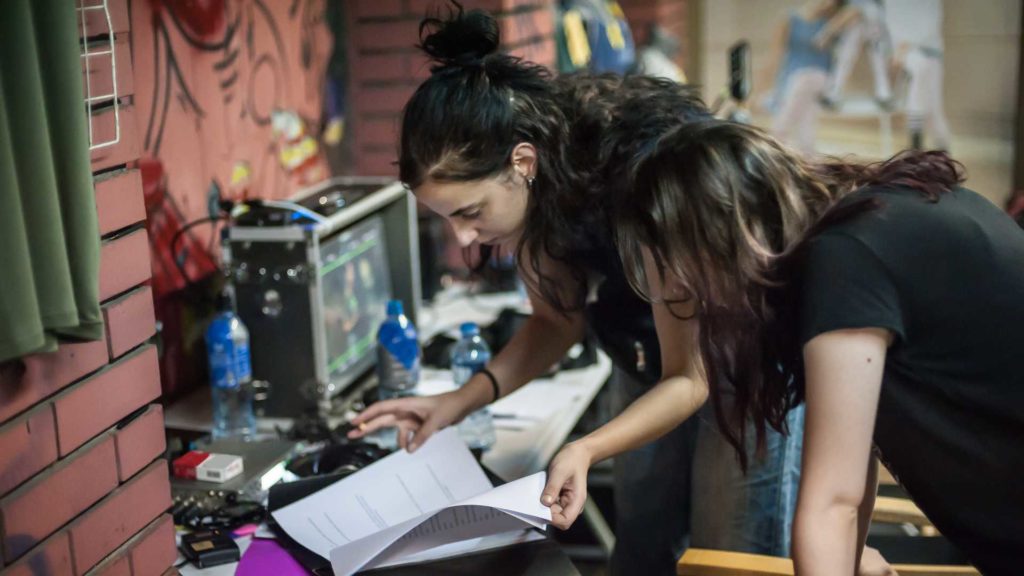If you’ve ever sat through the credits of a high-budget action film, you are aware that hundreds or even thousands of actors and crew personnel are needed to make a movie. However, who precisely is in control of all of these individuals, you may wonder? While the director makes all creative decisions, the first assistant director has the enormous task of managing the actors and crew.
While the director makes all creative decisions, the first assistant director has the enormous task of managing the actors and crew.
Understanding The Role Of A First Assistant Director
Directly responsible for supervising all department heads and ensuring that the whole cast and crew is on schedule is the first assistant director. The first AD prepares the daily schedule and long-term production timetable while also acting as the director’s point of contact with the rest of the cast and crew from pre-production through post-production. Therefore, every department on a film set must be at least somewhat familiar to the first AD, who must also be able to interact with and assign work to each department head successfully.
Plus, if you’re looking for more… why not compare and contrast this role against that of the designated head honcho – the director!
Responsibilities As A First Assistant Director
Creating Storyboards
Firstly, the first AD divides the screenplay into storyboards that show how each scene will be filmed.
Setting Shooting schedules
The first AD makes a general shooting schedule once the director approves the storyboards. The first assistant director coordinates the shooting schedule with the line producer, production manager, and crew department heads. The AD is responsible for making ensuring that all scenes are planned for when the proper setting, props, and actors are available.
Organising Call sheets
Organising Call sheets. A call sheet is created by the second AD and first AD together before each day of filming. The first AD’s responsibility during production is to ensure that everyone arrives at their call times and that filming proceeds according to schedule.
Calling The Roll
“Calling the roll” is a term used to describe one of the first assistant director’s main duties during production. The 1st AD signals the different department heads (such as the camera operator, key grip, and sound mixer) to be ready for shooting to begin by calling the roll.
Liaising With The Crew
The first assistant director acts as a liaison between the director and the rest of the team. In general, the first AD is consulted when there is a need for communication in either direction.

Being An On-Set Peace Negotiator
The first AD is also in charge of maintaining order on the set. The first AD’s responsibility is to settle arguments on set or situations when someone is not doing their duties properly. When necessary, this can necessitate disciplinary action or staff replacement.
Managing Safety
Any film set prioritises safety, and the first AD is responsible for making sure that all health and safety regulations are followed. To prevent cast and crew personnel from being in danger, each department takes distinct safety measures. The first AD is in charge of each department and is ultimately in charge of making sure that each department head is keeping a safe working environment.
The first AD prepares the daily schedule and long-term production timetable while also acting as the director’s point of contact with the rest of the cast and crew from pre-production through post-production.
Responsibilities As A Second Assistant Director?
By addressing particular responsibilities, the second assistant director helps the first assistant director:
Organising Daily Call sheets
The next day’s shooting schedule must be made and sent to all departments by the second assistant director.
Coordinating The Cast
When a sequence is ready to be filmed, the second assistant director works with the actors and extras to ensure sure everyone is on set and camera-ready.
Directing extras
Extras are usually under the 2nd AD’s (or 3rd AD’s on bigger sets) direction. When filming lengthy scenes, they cue and pre-direct the actions of the extras.
Facilitating Security
The 2nd AD is in charge of working with security to keep spectators away from the filming areas.
Skills And Qualifications Needed To Become A First Assistant Director
A first assistant director does not need to have a formal education or a degree, like other occupations in the film business. However, a lot of active ADs have both formal film school training and a lot of real-world production experience from working in other positions. Most ADs will be part of a union and directors almost certainly are.
For example, all directors employed in the UK entertainment sector can be members of the Director’s UK Film Union. Benefits might include access to legal services, events, and pay rate guidance. However, you must hold at least one director credit on a compensated film or television project in order to qualify.
The abilities needed to be a successful AD:
- 1. Multitasking and delegation skills
- 2. Good communication abilities
- 3. Good planning and organisational skills
- 4. Strong focus on the details
- 5. Basic familiarity and comprehension of each department present on a film production.
Many ADs have worked as runners or production assistants in the past. In these roles, individuals can get knowledge of how movie sets work and a deeper comprehension of the many departments and their roles.
A lot of currently employed filmmakers began their careers as assistant directors. For someone who eventually wishes to direct their own feature film or television programme, the work may serve as a stepping stone.
